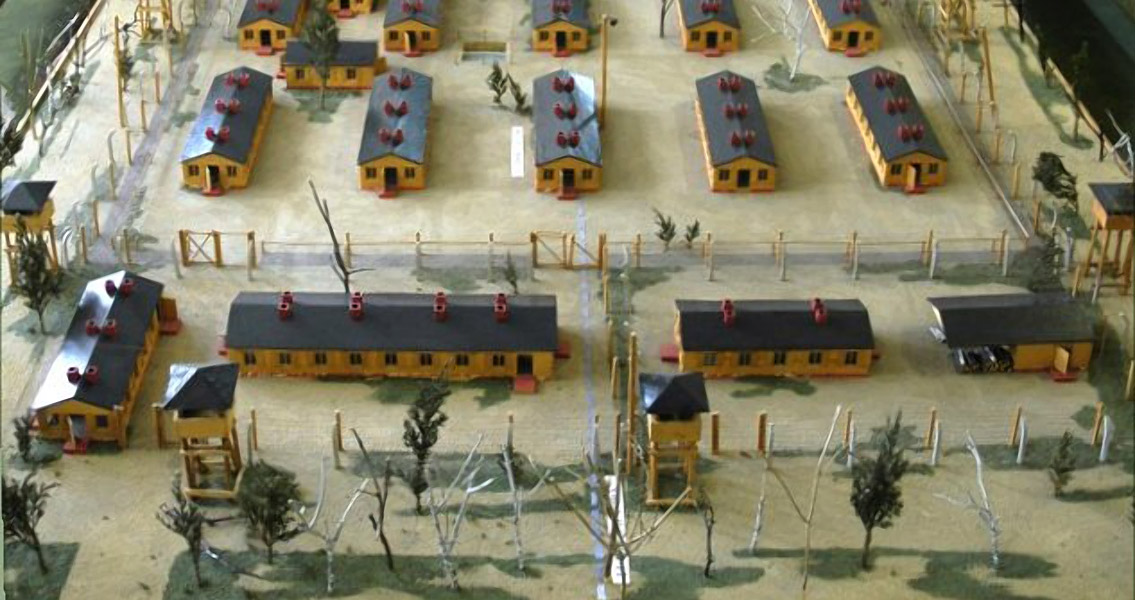<![CDATA[It was probably the most audacious escape in history, one which captured the imagination,,sent shock waves through Nazi Germany and was immortalised by Hollywood in The Great Escape, starring Steve McQueen. On the bitterly cold, moonless night of 24th March, 1944, 76 Allied service men fled from the Nazi Prisoner of War Camp, Stalag Luft III. The men snuck down a tunnel, codenamed 'Harry', that they had been digging over the course of nearly a year. Three of the men made it to freedom, the remaining 73 were captured. The Geneva Convention stated that the harshest punishment that could be levied for attempted escape from a POW camp was ten days solitary confinement, a comparatively mild penalty which undoubtedly emboldened the service men to launch their bid. Hitler however, seemed to take the act of brazen defiance personally. On his orders, fifty of the recaptured prisoners were executed by the Gestapo. "Until the Great Escape, and the murder of the 50, the RAF prisoners of war were treated reasonably well by the Germans." explained Andrew Wiseman, an ex-serviceman who was sent to Stalag Luft III shortly after the escape, to the BBC in 2014. "But after The Great Escape, relations between us and the Germans changed. The camp could not believe what the Germans had done to the 50 and there was shock, horror almost, and a great deal of sadness." Located roughly 100 miles southeast of Berlin, in what is now Poland, Stalag Luft III was considered one of the most secure German POW camps. Much of it had been designed specifically to prevent tunneling, a fact which makes the airmen's method of escape all the more remarkable. It was built on sandy terrain which should have made it extremely difficult to tunnel. The prisoner's accommodation was raised off the ground, and microphones had been buried nine metres below the perimeter fence to detect tunneling activity. Roger Bushell, pilot in the RAF who had been shot down during the evacuation of Dunkirk, was the mastermind behind the escape plan. A veteran at escaping capture, Bushell had already broken out of two German POW camps before he was sent to Stalag Luft III. An escape committee was formed in Spring 1943, and the team quickly agreed on Bushell's plan to burrow to freedom. Three tunnels would be created, code named Tom, Dick and Harry, which would run 300 metres to beyond the camp's perimeter fence. Harry, the first of the tunnels to be completed, was constructed underneath Hut 104. It was accessed via a trapdoor under a stove, which was constantly lit to prevent camp guards from investigating it. The tunnel had to be dug thirty feet deep, to avoid detection by the microphones on the perimeter fence. In all, the prisoners excavated over 100 tons of sand, which they secreted away to a garden area in their socks. A crude air pump was constructed in the tunnel system, as well as a trolley system to move sand through the tunnel. By 24th March, the tunnel was completed, and some 200 prisoners planned to make their escape through it. Over the course of the evening, prisoners were pulled through the tunnel on the trolley system, one at a time, the tedious process meaning only a few could be pulled through the tunnel every hour. At 5 am on the following morning, the tunnel was discovered when a guard fell into its exit. The prisoners yet to escape scrambled back to their huts, while the Germans launched a massive man hunt to capture those who had made it through. It took less than a fortnight for the Nazis to capture seventy three of the escaped prisoners, using roadblocks, border controls and searches of hotels. Per Bergsland and Jens Muller, two Norwegian pilots, escaped on a freighter to Sweden, while Bram van der Stok, a Dutch pilot, managed to get all the way to Gibraltar by train and on foot. They were the only three to complete The Great Escape. Image courtesy of Wikimedia Commons user: archidiecezja.lodz.pl]]>
The Great Escape Begins at Stalag Luft III
